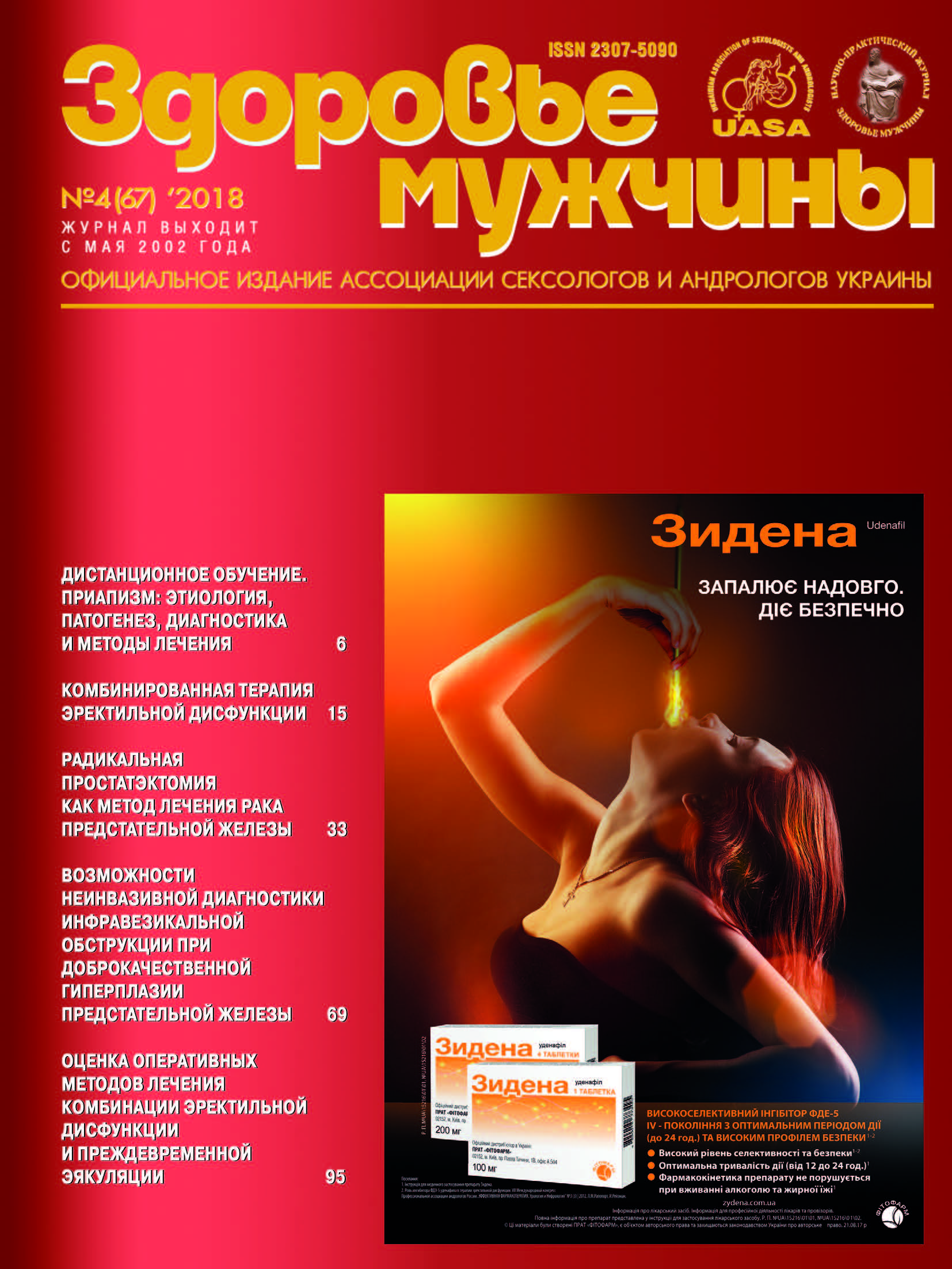The Effect of Multi-vector Drugs on the Activity of Glutathione Peroxidase in the Blood and Tissues of the Kidneys of Rats in the Simulation of Acute Pyelonephritis and Concomitant Type 1 Diabetes
##plugins.themes.bootstrap3.article.main##
Abstract
The objective: to determine the activity of the enzyme antioxidant system glutathione peroxidase in blood plasma and kidney tissues of rats in the simulation of acute pyelonephritis (OD) and concomitant streptozotocin diabetes mellitus (DM) type 1.
Materials and methods. Experimental studies were performed on Wistar rats weighing 200–300 g at the age of 8–9 months. Animals were divided into five groups.
Results. In acute pyelonephritis, the activity of glutathione peroxidase in blood plasma and in kidney tissues of animals was significantly reduced, and when simulated in acute pyelonephritis rats against the background of type I diabetes, the activity of glutathione peroxidase in blood plasma decreased almost twice, with respect to uncomplicated SD inflammation. Traditional CF contributed only to the development of a tendency to increase the activity of glutathione peroxidase in blood plasma and in kidney tissue. The enzyme activity remained significantly lower when compared with the norm. With the proposed drug exposure to multivectoral agents, the activity of glutathione peroxidase in plasma and in renal tissue increased significantly in accordance with the group of animals with TMB and improved the enzymatic state of plasma by 48% and by 38% in renal tissue relative to the group of animals without DE.
Conclusion. It should be considered pathogenetically significant violations of the detoxification of peroxides and hydroxides in the development of acute pyelonephritis with concomitant type I diabetes mellitus. The use of multi-vector drugs promoted an increase in the activity of glutathione peroxidase in the blood plasma and in the kidneys of animals with acute pyelonephritis complicated by concomitant type I diabetes mellitus.##plugins.themes.bootstrap3.article.details##

This work is licensed under a Creative Commons Attribution 4.0 International License.
Authors retain the copyright and grant the journal the first publication of original scientific articles under the Creative Commons Attribution 4.0 International License, which allows others to distribute work with acknowledgment of authorship and first publication in this journal.
References
Ефремова Е.Д., Ботвинева Л.А. Сахарный диабет: современные достижения и перспективные направления в профилактике и лечении. Материалы Всерос. науч.-практич. конф., посвященной 60-летию ФГБУ СКФНКЦ ФМБА России. – Пятигорск: РИА-КМВ, 2017. – С. 77–86.
Omer Evirgen, Ahmet Gökçe, Oktay Hasan Ozturk et al. Effect of Thymoquinone on Oxidative Stress in Escherichia coli-induced Pyelonephritis in Rats // Current Therapeutic Research. – 2011. – V. 72, № 5. – Р. 204–215. https://doi.org/10.1016/j.curtheres.2011.09.002
Emin Ozbek. Induction of Oxidative Stress in Kidney // International Journal of Nephrology. – 2012;2012:465897. https://doi.org/10.1155/2012/465897
Derai El-hadjela, Kechrid Zine, Bouhafs Leila. The beneficial effect of combined administration of vitamins C and E on renal function and selected parameters of antioxidant system in diabetic rats fed zinc-deficient diet // Afr. J. Biotechnol. – 2013. – Vol. 12 (43). – Р. 6232–6240. http://dx.doi.org/10.5897/AJB2013.13038
Nasri H. Antioxidant therapy to ameliorate chronic kidney disease induced by oxidative stress; an updated mini-review. J. Prev. Epidemiol. 2017; 2(1): e04. PDF
Drachuk V.M., Zamorskii I.I., Goroshko O.M. The influence of glutathione on the prooxidant-antioxidant activity in kidneys and blood of rats with rhabdomyolytic model of acute kidney injury // Укр. біофарм. журн., № 4 (45). – 2016. – С. 20–123. https://doi.org/10.24959/ubphj.16.49
Sefa Celik, Sadik Gorur, Ozkan Aslantas, Suat Erdogan, Sabahattin Ocak, Sibel Hakverdi Caffeic acid phenethyl ester suppresses oxidative stress in Escherichia coli-induced pyelonephritis in rats Molecular and Cellular Biochemistry March 2007, Volume 297, № 1–2, p. 131–138. https://doi.org/10.1007/s11010-006-9337-x
Vysakh A., Raji N.R., Suma D., Jayesh K., Jyothis M., Latha M.S. Role of antioxidant defence, renal toxicity markers and inflammatory cascade in disease progression of acute pyelonephritis in experimental rat model // Microb Pathog. – 2017. – V. 109. – 189–194. https://doi.org/10.1016/j.micpath.2017.05.047
Góth L. Reactive oxygen species, hydrogen peroxide, catalase and diabetes mellitus. // Redox Rep. – 2006. – V. 11 (6). – P. 281–282. https://doi.org/10.1179/135100006X154996





